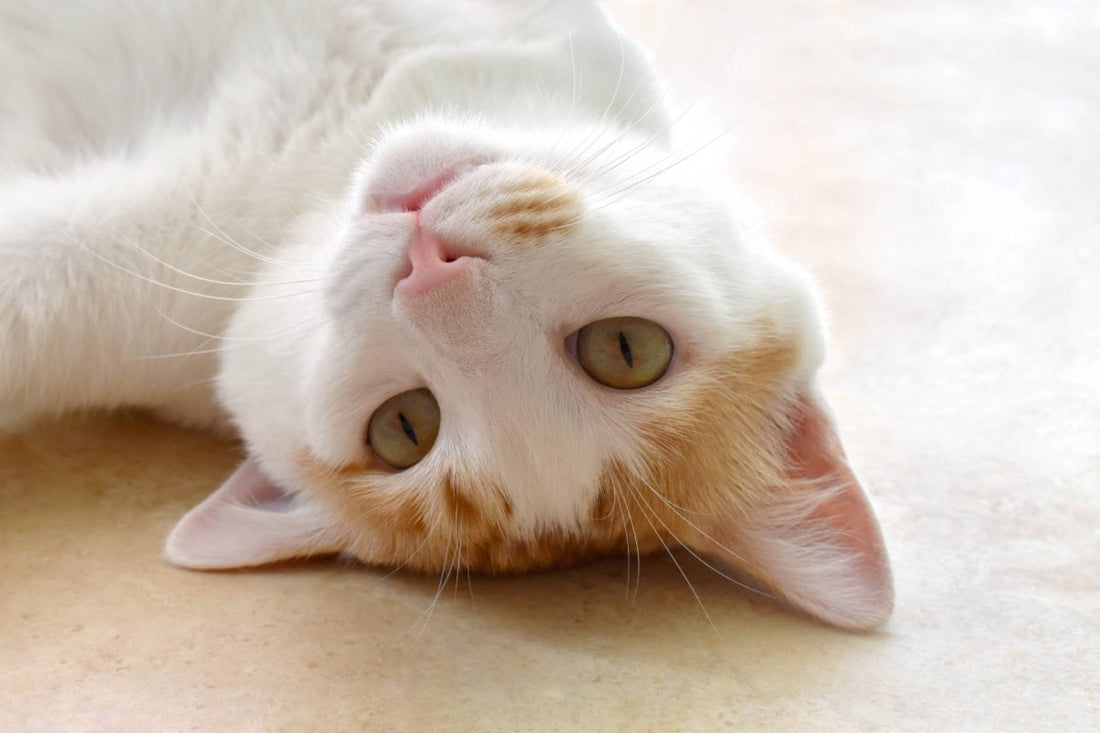Cat in heat: When your furry friend goes crazy
Is your cat suddenly meowing incessantly, rolling around on the floor, and seems like a different person? Don't worry—your cat is probably in heat! Heat is a natural process in the life of every unneutered cat. But what exactly is heat, how long does it last, and how can you help your cat during this time? This article clarifies all the important questions and offers you valuable tips.
What does “cat in heat” even mean?
Heat refers to a female cat's readiness to mate. It's a natural cycle triggered by hormonal changes. During this phase, the cat displays significant behavioral changes to attract a potential male mate.
Heat in cats in brief:
- Natural reproductive cycle in unneutered cats.
- Start: Often from the 6th month of life, depending on breed and health condition.
- Trigger: Hormonal changes.
How long is a cat in heat? The duration at a glance
The heat cycle usually lasts between 3 and 10 days , depending on the cat. If fertilization does not occur, another heat cycle usually follows after 2 to 3 weeks.
Typical cycles of heat:
- Proestrus (preparatory phase): 1–2 days – not yet ready to mate.
- Estrus (heat): 3–10 days – cat shows clear behavior.
- Interestrus (pause): If no fertilization occurs, it takes 2–3 weeks until the next heat.
Factors that influence the duration:
- Season: Heat occurs mainly in spring and autumn.
- Keeping: Indoor cats can go into heat year-round due to artificial light sources.
- Breed: Some breeds, such as the Siamese cat, are in heat more frequently and intensely.
Symptoms: How do you know if your cat is in heat?
If your cat is in heat, she'll quickly let you know. The symptoms are often hard to miss.
Typical symptoms of a cat in heat:
- Loud meowing: Your cat is “calling” potential male cats.
- Affectionate and cuddly: She seeks your closeness and rubs herself against you.
- Rolling movements: She frequently rolls back and forth on the floor.
- Posture of the rear end: The cat lifts its rear end and stretches its tail to the side.
- Restlessness: Cats in heat sleep less and appear nervous.
- Marking: Some cats mark their territory with urine.
What to do if your cat is in heat? Tips for calming her down
Heat can be stressful not only for your cat, but also for you. Here are some tips to help your cat:
1. Create distraction
- Play extensively with your cat to keep it busy.
- Interactive toys can help relieve their energy.
2. Offer warmth and security
- A warm blanket or a grain pillow can have a calming effect.
- Cuddle with your cat a lot if she allows it.
3. Calm the environment
- Reduce noise and bright light sources in the home.
- Keep windows closed to avoid attracting nearby tomcats.
4. Consider a visit to the vet
- Castration is the long-term solution to prevent heat.
- In individual cases, the veterinarian may also recommend hormonal medication to calm the animal.
Heat in cats: Castration as a long-term solution
Heat can be a stressful time for both cat and owner. Neutering is the best way to prevent heat and spare your cat stress.
Advantages of castration:
- No stress: no more heat, no more hormonal fluctuations.
- Health: Reduces the risk of uterine infections and tumors.
- No marking: The unpleasant marking behavior is minimized.
When should you have your dog neutered?
Veterinarians recommend castration before the first heat, i.e. between the 4th and 6th month of life .
Frequently asked questions about heat in cats
“How long is a cat in heat?”
The heat usually lasts 3–10 days , depending on the cat.
“How often do cats go into heat?”
If the cat is not mated, she may come into heat again every 2-3 weeks.
“Can I prevent heat?”
Yes, castration is the safest and best method to prevent heat.
“What should I do if my cat is in heat?”
Stay patient, keep her busy, and offer her a quiet place to retreat.
Heat in indoor cats vs. outdoor cats
Indoor cats often go into heat more frequently and intensely than outdoor cats. The reason? Artificial light in apartments influences the hormonal cycle. Outdoor cats, on the other hand, follow the natural seasons more closely.
Important differences:
- Indoor cats: Heat possible year-round.
- Outdoor cats: Heat mainly in spring and autumn.
Conclusion: Understanding heat in cats and acting correctly
Heat is a natural process in the life of an unneutered cat, but it's often challenging for owners. The most important points at a glance:
- How long is a cat in heat? Typically 3–10 days, sometimes longer.
- Symptoms: Loud meowing, rolling movements, clinginess and restlessness.
- What to do? Create distractions, offer peace and quiet, and consider castration.
- Castration: The long-term solution to prevent heat and stressful behavior.
With patience, understanding, and the right measures, you can help your cat in heat get through this phase. Consider spaying or neutering in the long run – for a more relaxed and healthier life for your cat! 🐱



